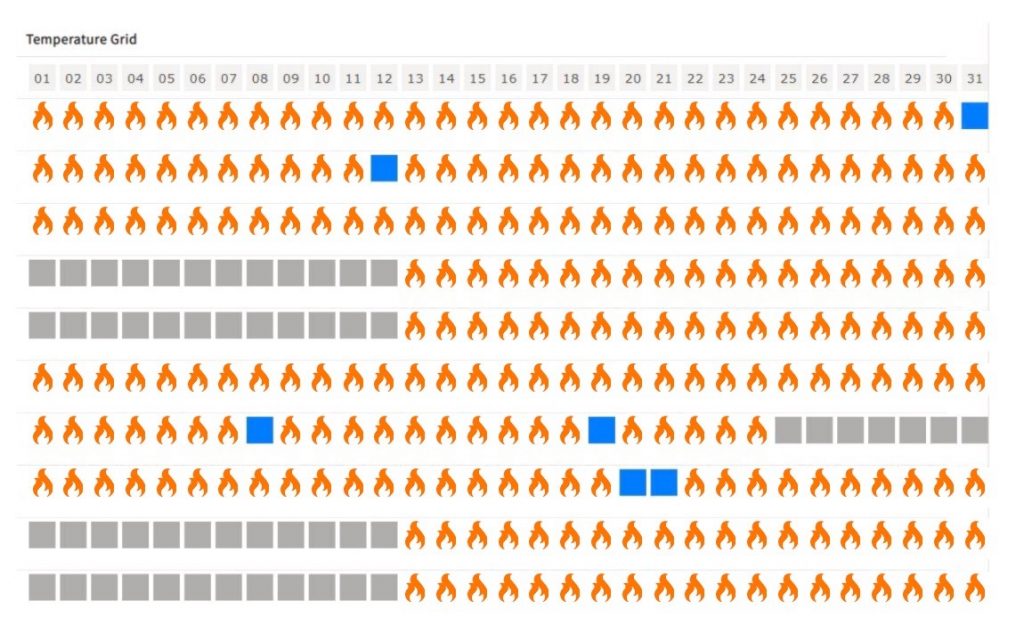Sistema.bio and Nexleaf: What Can Biogas and Sensor Monitoring Tell Us About Clean Cooking?
Sistema.bio and Nexleaf Analytics came together to pilot an innovative range of technology and data solutions and offer insights that can help guide other clean cooking initiatives. Sistema.bio is a social enterprise that manufactures and distributes high-quality, affordable biodigesters that enable farmers to convert waste into energy and fertilizer. Nexleaf is a non-profit technology firm that combines data and technology to improve public health systems. They’ve built innovations particularly to track and assess the adoption of clean cookstove technologies.
This partnership brings together Nexleaf’s sensor technology and Sistema.bio’s biogas cookstoves and cooking system to collect insights on best practices for measuring stove adoption and explore the potential use of cooking data for biogas stove monitoring and evaluation.
Around 3 billion people rely on stoves fueled by wood or coal to cook their meals each day. Not only is the resulting household smoke a significant contributor to climate change, but it is also responsible for nearly 4 million deaths from respiratory diseases each year. Biogas, a type of biofuel that is produced from the decomposition of organic waste, burns cleanly—without producing smoke or ash. The use of biogas to serve household cooking needs can significantly reduce the environmental and health impacts that are associated with traditional cookstoves. However, monitoring the adoption of biogas stoves can be challenging, especially when the systems are installed in remote farming communities around the world.
Understanding which cooking solutions really work is difficult. Clean cooking technologies can be tested for performance in labs and manufacturing facilities, but there are few options for tracking how much they are used and if they continue to function over time once they are given to households, especially in remote locations. For over a decade, Nexleaf has developed sensor and IoT technologies designed to uncover the ground truth of stove usage by gathering objective household data. Their StoveTrace temperature sensor and data logger device are attached to the stoves and upload data to a cloud-based platform that shows the time, length, and frequency households are cooking with their stoves. StoveTrace has been piloted as a means to measure the sustained adoption of clean cooking solutions, understand household cooking behaviors, and test alternative methods of measuring household greenhouse gas emissions reductions.
For this project, the Sistema.bio team used StoveTrace to collect cooking data from six households in India that use their biogas cookstove for domestic activities. The dashboard processes all the collected data and displays graphs that show the time and length of cooking that has occurred on any given day. As the data in Figure 1 shows, there was a remarkably high amount of cooking across all six households. Every household is cooking nearly every day, multiple times per day. This data is very positive in terms of sustained use of biogas stoves, especially given that all the households have had their digesters for a considerable period of time.
Figure 1. StoveTrace dashboard data from January 2021. The flames indicate days where cooking occurred. Blue squares indicate that no cooking has occurred that day, and gray squares indicate no data was downloaded that day, or that the sensors were not yet installed. As you can see, cooking occurred nearly every day on almost every burner.
The lessons learned from this pilot can be used to guide the adaptations needed for an expanded project to be successful. For example, ensuring that participating households understand the need to maintain the sensor’s placement is critical for accurate data collection. Further, while the StoveTrace data logger can store data for up to 3 months, data collection should be done more frequently to discover and fix issues that cause data gaps (i.e. malfunctioning or misplaced sensors). As a result, more regular field visits from staff may be necessary.
While this was a micro-scale project, the results are still noteworthy because of the exceptionally high level of usage seen among these six Sistema.bio users in India indicating biogas’ great promise as an impactful clean cooking solution. This pilot also illustrates how sensors and other forms of direct stove-use monitoring can be used to accurately and transparently assess household stove usage at scale. Clean cooking programs conventionally rely on surveys and self-reported data on stove usage to evaluate impact. Sensors can reveal objective truths and patterns of stove use, providing visibility into what’s really going on in someone’s kitchen. Not only can this be used to draw attention to specific communities or projects that require further intervention, but it can also help determine where and when clean cookstove programs are most effective. This kind of insight can help direct investment towards the projects that need it most.
This pilot also demonstrates how sensor-based monitoring can serve as a preventative maintenance tool. Having visibility into households’ daily stove usage makes it easy to identify when a household isn’t cooking regularly, allowing program teams to proactively reach out to see if there are any stove troubles.
Another area where sensor-based monitoring can help is in gaining buy-in from key decision-makers, as this objective data provides concrete evidence of how beneficial a clean cooking solution is. For example, due to past technologies failing to perform as intended, there has traditionally been a lack of trust in biogas which can be corrected with this type of data.
The collaboration between Sistema.bio and Nexleaf Analytics exemplifies how combining high-quality technology with precise data monitoring can help enable clean cooking projects across the world to achieve verifiable impact.
The post Sistema.bio and Nexleaf: What Can Biogas and Sensor Monitoring Tell Us About Clean Cooking? appeared first on Nexleaf Analytics.

